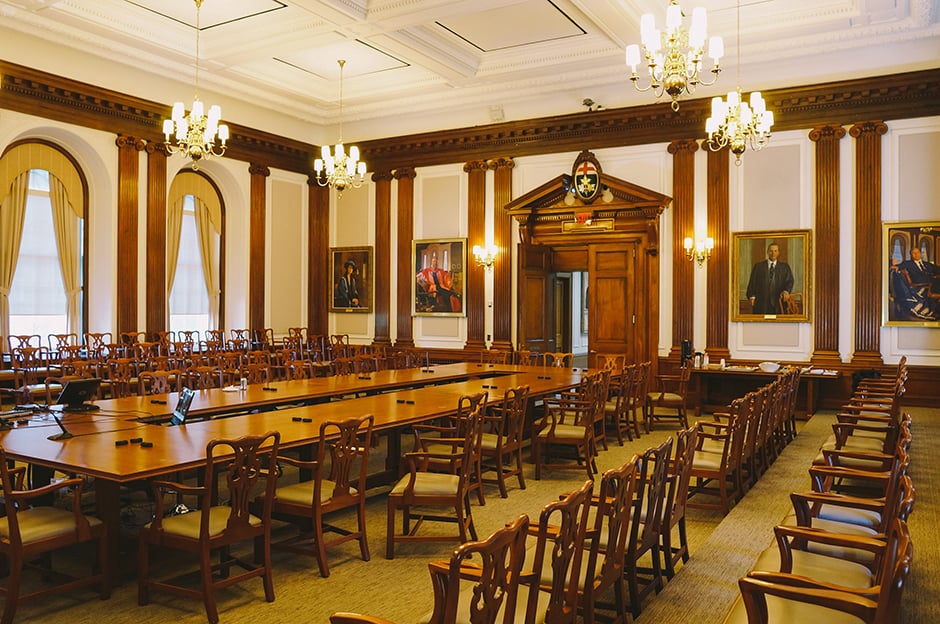Governing Council elections will run from February 5–16, and campaigning is already underway. There are 47 student candidates running for eight seats. With the elections coming up, here is a breakdown of how Governing Council works and how it affects U of T students.
Evolving history
U of T was previously governed by a senate and a board of governors, but the University of Toronto Act of 1971 merged those two bodies into one: Governing Council.
The University of Toronto Act stipulates that members of Governing Council and its boards and committees must put the interests of the university first, regardless of the constituency they represent.
More recently, the Task Force on Governance, established in 2007 by former U of T President David Naylor, established six themes by which Governing Council would shape itself: Oversight and Accountability – Quality of the Governing Council’s Meeting Agendas; Overlap/Duplication, Deficiencies, Ambiguities – Board and Committee Mandates; Delegated Authority for Academic Divisions – Lack of Clarity, Inconsistency; Delegated Authority in the Tri-campus Context – Levels of Oversight and Accountability, Redundancy; Quality of Governors – Experience Mix and Representation; and Roles of and Appropriate Interfaces between Governors and the Administration.
Structure
Governing Council’s role is to oversee academic, business, and student affairs. Its composition is based on the five ‘estates’ of the university: government appointees, teaching staff, alumni, administration, and students.
The council is composed of 50 members — U of T Chancellor Michael Wilson and President Meric Gertler are members by virtue of their positions. Sixteen members are appointed by Lieutenant Governor-in-Council Shirley Hoy, and two are appointed by Gertler. Thirty members are elected: 12 teaching staff, eight alumni, two administrative staff, and eight students. Of the eight student members, four are full-time undergraduates, two are part-time undergraduates, and two are graduates.
A series of boards and committees are part of Governing Council, though not all board and committee members are Governing Council members. The three main boards are the Academic Board, the Business Board, and the University Affairs Board. Students sit on all three boards, and the various committees are beneath them.
The Academic Board handles matters affecting the teaching, learning, and research functions of the university. It establishes priorities and objectives, plans initiatives, and determines how to effectively use resources in the interest of academic progress. There are 123 voting members of the Academic Board: 88 teaching staff; two elected librarians; four administrative staff; six “lay members,” who are alumni or government appointees to Governing Council; 16 students, four who are elected members of Governing Council and 12 who are appointed by the Academic Board’s striking committee; four voting assessors selected by Gertler; and the President, Chancellor, Chair, and Vice-Chair of Governing Council.
The Business Board is made up of 27 members, including two students. It oversees policy regarding funding, student fees or ancillaries, and approves Hart House’s operating plan. Governing Council’s website describes the Business Board’s responsibilities as “ensuring that resource allocations are responsible and cost-effective, and approving policy and major transactions in the business-management of the University.”
The University Affairs Board is also made up of 27 members, including nine students. It is responsible for non-academic policy that concerns quality of student and campus life. It appoints six members to the Discipline Appeals Board, while the other six members are appointed by the Academic Board. It handles policy involving campus security, childcare, co-curricular programs, and university-wide campus issues at UTSG. Ceremonials, equity issues, community relations, representative student groups, use of the University of Toronto’s name and incidental fees also fall under the purview of the University Affairs board.


